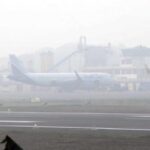The new stretched version of the Boeing 737 MAX, the 737 MAX 10, completed its maiden test flight at Boeing Field near Seattle last Friday afternoon.
This flight took off from Renton Field in Renton, Washington at 10.07am and landed at Boeing Field two-and-a-half hours later, Boeing said in a statement. This was the first of the certification flights the new aircraft model will have to perform in order to be certified for commercial services. The Boeing 737 MAX 10 is expected to enter into service in 2023.
“The airplane performed beautifully,” said 737 Chief Pilot Capt. Jennifer Henderson. “The profile we flew allowed us to test the airplane’s systems, flight controls and handling qualities, all of which checked out exactly as we expected.”
The launch of the Boeing 737 MAX 10 is very important for the American manufacturer for several reasons. First of all, the company needs the process to go smoothly after the Boeing 737 MAX aircraft type has been grounded for over 20 months due to a design flaw that caused two crashes in Indonesia and Ethiopia between 2019 and 2020 killing 346 people. The resolution of the problems that emerged from the investigation of the two accidents required software upgrades and numerous certification steps with all the safety regulators around the world and forced Boeing to stop production of the aircraft type for many months after deliveries were stopped.
Furthermore, Boeing needs an aircraft that can compete in the medium to long-haul narrow-body segment where Airbus is affirming its leadership with the A321neo aircraft in all its variants. The increased fuel efficiency and longer range of the A321neo will enable airlines to open thinner long-haul markets that do not support a wide-body non-stop service but can profitably be served with smaller and more efficient aircraft.
“The 737-10 is an important part of our customers’ fleet plans, giving them more capacity, greater fuel efficiency and the best per-seat economics of any single-aisle airplane,” said Stan Deal, president and CEO of Boeing Commercial Airplanes. “Our team is committed to delivering an airplane with the highest quality and reliability.”
The 737-10 can carry up to 230 passengers. It also incorporates environmental improvements, cutting carbon emissions by 14 percent and reducing noise by 50 percent compared to today’s Next-Generation 737s.







